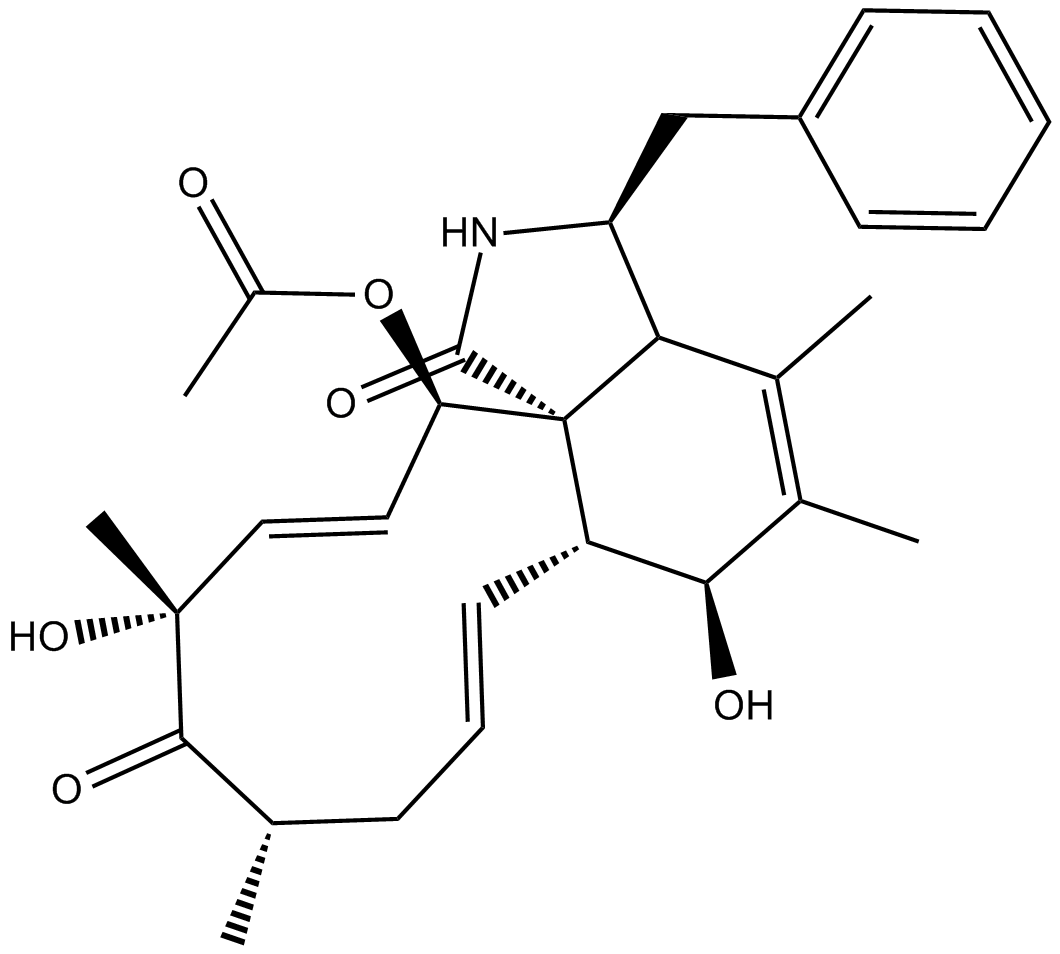Cytochalasin C |
| Catalog No.GC14420 |
inhibits actin polymerization
Products are for research use only. Not for human use. We do not sell to patients.

Cas No.: 22144-76-9
Sample solution is provided at 25 µL, 10mM.
Cytochalasin C inhibits actin polymerization.
The cytochalasins are cell-permeable fungal metabolites inhibiting actin polymerization. This interferes with such diverse processes as cell growth, movement, phagocytosis, degranulation, as well as secretion.
In vitro: Previous study described the first results of actin assembly assays in the presence of the different cytochalasins. Acceleration of actin assembly in the presence of several cytochalasins was apparent from the more extensive assembly at shorter times. Cytochalasin C and its analogs, cytochalasin D, H, and J made up the same Group, which was characterized by fast assembly, so that the extent of assembly was reached before the first FPR data trace could be obtained, less than 4 min into the reaction. Thus, the members of this group including cytochalasin C were both strong accelerators of assembly and also inhibitors of steadystate extent of assembly.Moreover, cytochalasin C and D were found to be much stronger inhibitors than cytochalasin H and J, which were moderate and weak inhibitors, respectively. In addition, the effects of these cytochalasins on the diffusion coefficients of actin filaments at steady state was also have examined. Results showd that cytochalasin D and H had significantly higher diffusion coefficients. In contrast, cytochalasin C and cytochalasin A, B, J displayed a weak shortening activity [1].
In vivo: In zebrafish, cytochalasin D at 0.2 μM gave an approximate LD50, while cytochalasin B was fully tolerated at 5 μM, and gave an LD50 of 10 μM. Cytochalasin C was tolerated fully at 1 μM, which was ten-fold higher than the level for cytochalasin D that was tolerated [2].
Clinical trial: Up to now, there is no clinical data reported.
References:
[1] Walling, E. A.,Krafft, G.A. and Ware, B.R. Actin assembly activity of cytochalasins and cytochalasin analogs assayed using fluorescence photobleaching recovery. Archives of Biochemistry and Biophysics 264(1), 321-332 (1988).
[2] Trendowski M, Wong V, Wellington K, Hatfield S, Fondy TP. Tolerated doses in zebrafish of cytochalasins and jasplakinolide for comparison with tolerated doses in mice in the evaluation of pre-clinical activity of microfilament-directed agents in tumor model systems in vivo. In Vivo. 2014 Nov-Dec;28(6):1021-31.
Average Rating: 5 (Based on Reviews and 14 reference(s) in Google Scholar.)
GLPBIO products are for RESEARCH USE ONLY. Please make sure your review or question is research based.
Required fields are marked with *




















